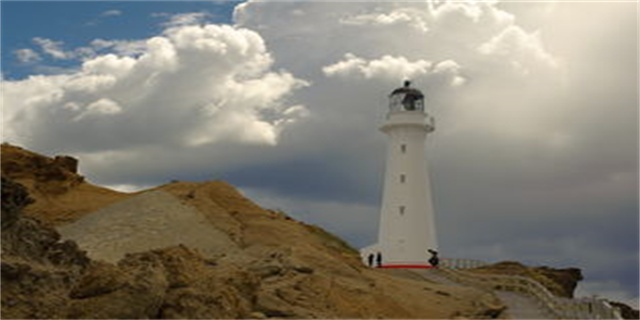首页 > 综合百科 正文
Windforce: The Power of Nature Unleashed
The Origins of Windforce
The phenomenon of wind power has been harnessed by humans for centuries, providing a renewable and sustainable source of energy. However, it is only in recent decades that wind energy has gained significant attention as a viable alternative to traditional forms of power generation. With the development of advanced technologies and a growing emphasis on transitioning to clean energy sources, wind power has emerged as a leading contender in the global quest for sustainable solutions.
The Mechanics of Wind Turbines
At the heart of wind power lies the mighty wind turbine, a towering structure equipped with rotating blades that capture the kinetic energy present in wind currents. These blades are carefully designed to maximize efficiency, with factors such as length, shape, and speed being crucial components in optimizing energy generation. As the wind encounters the rotating blades, their motion converts the kinetic energy of the wind into mechanical energy, which is then harnessed to generate electricity through an interconnected system of gears and generators.

Modern wind turbines are often equipped with built-in sensors that detect changes in wind speed and direction, allowing for real-time adjustments in blade positioning and turbine orientation. This adaptive technology ensures that maximum energy output is achieved under varying wind conditions, making wind power a highly reliable and consistent energy source.
The Environmental Benefits of Wind Power
One of the most significant advantages of wind power is its environmental sustainability. Unlike fossil fuel power plants, wind turbines produce electricity without generating harmful pollutants or greenhouse gas emissions. The use of wind power contributes to reducing reliance on fossil fuels, thus helping to mitigate the impacts of climate change and improve overall air quality.

In addition to being clean and renewable, wind power also has a minimal land footprint. Unlike traditional power plants, which require extensive land excavation and construction, wind turbines can be installed on existing farmland or offshore where they have minimal disruption on local ecosystems. These installations often serve as dual-use areas, allowing farmers to continue working the land or opening up new opportunities for offshore activities such as fishing or tourism.
Furthermore, wind power offers economic benefits, driving investment and job creation in the renewable energy sector. The manufacturing, construction, and maintenance of wind turbines provide employment opportunities across a range of skill levels, creating local economic growth and stimulating sustainable development in communities.
Conclusion: The Future of Wind Power
As the world continues to grapple with the challenges posed by climate change, the importance of transitioning to clean and sustainable energy sources cannot be overstated. Wind power has emerged as a frontrunner in the renewable energy sector, offering numerous environmental and economic benefits. With ongoing advancements in technology and increasing investment in wind infrastructure, the potential for wind power to reshape global energy systems is immense.
However, further research and development are still needed to address certain challenges associated with wind power, such as intermittency issues and potential impacts on wildlife. Nonetheless, the progress made in harnessing the power of wind, with its limitless supply and widespread availability, is a testament to the power of innovation and human ingenuity in paving the way for a greener and more sustainable future.
猜你喜欢
- 2023-12-25 北京到成都高铁(穿越天际线:北京到成都高铁之旅)
- 2023-12-25 称骨算命准不准(命运之谜:称骨算命准不准?)
- 2023-12-25 保尔柯察金的精神(保尔柯察金:一个伟大思想家的精神探索)
- 2023-12-25 车速很快的百合短文(百合如风)
- 2023-12-25 大学物理电磁学(电磁学:体验力的奥秘)
- 2023-12-25 仓央嘉措的诗集(仓央嘉措的《白桦林诗选》:凝固的爱与绚烂的才华)
- 2023-12-25 wetransfer(Wetransfer Simplifying File Transfers for the Digital Age)
- 2023-12-25 xinshangmeng(心上夢芒:活在當下的意義)
- 2023-12-25 windforce(Windforce The Power of Nature Unleashed)
- 2023-12-25 爱上琉璃渠女孩(沉醉在琉璃渠的奇迹中)
- 2023-12-25 win7如何显示隐藏文件(如何在Windows 7系统中显示隐藏文件)
- 2023-12-24 爱情测试姓名配对(姓名配对测试:探究你和伴侣的爱情匹配度)
- 2023-12-25北京到成都高铁(穿越天际线:北京到成都高铁之旅)
- 2023-12-25称骨算命准不准(命运之谜:称骨算命准不准?)
- 2023-12-25保尔柯察金的精神(保尔柯察金:一个伟大思想家的精神探索)
- 2023-12-25车速很快的百合短文(百合如风)
- 2023-12-25大学物理电磁学(电磁学:体验力的奥秘)
- 2023-12-25仓央嘉措的诗集(仓央嘉措的《白桦林诗选》:凝固的爱与绚烂的才华)
- 2023-12-25wetransfer(Wetransfer Simplifying File Transfers for the Digital Age)
- 2023-12-25xinshangmeng(心上夢芒:活在當下的意義)
- 2023-02-24大盘鸡的家常做法(家常版大盘鸡,方法简单,好吃接地气,吃完汤汁拌面,真过瘾)
- 2023-02-24大连在哪个省(东北三省最发达的城市——大连)
- 2023-02-24大麦茶怎么泡(大麦茶怎么泡?)
- 2023-02-24河蚌怎么处理(为什么在农村很少人吃河蚌?)
- 2023-02-24牛肉丸子的做法(自制纯手工牛肉丸,劲道弹性足,鲜香有嚼劲)
- 2023-02-24浏览器兼容性(浏览器兼容模式怎么设置?)
- 2023-02-24zuoche(领导开车的礼仪)
- 2023-02-24获取ip地址(如何查看电脑ip地址?)
- 2023-12-25大学物理电磁学(电磁学:体验力的奥秘)
- 2023-12-25xinshangmeng(心上夢芒:活在當下的意義)
- 2023-12-24安全标准化自评管理制度(安全自评管理制度的建立与实施)
- 2023-12-24安全模式怎么进(如何进入安全模式:解决电脑问题的有效方法)
- 2023-12-23zhitong(使用智能助手提升工作效率)
- 2023-12-23本田crv报价(2021款本田CR-V报价及配置信息)
- 2023-12-23从百草园到三味书屋教案(从雅集百草园到经典三味书屋——课程设计教案)
- 2023-12-23暗黑2圣骑士技能(暗黑2圣骑士的技能之旅)
- 猜你喜欢
-
- 北京到成都高铁(穿越天际线:北京到成都高铁之旅)
- 称骨算命准不准(命运之谜:称骨算命准不准?)
- 保尔柯察金的精神(保尔柯察金:一个伟大思想家的精神探索)
- 车速很快的百合短文(百合如风)
- 大学物理电磁学(电磁学:体验力的奥秘)
- 仓央嘉措的诗集(仓央嘉措的《白桦林诗选》:凝固的爱与绚烂的才华)
- wetransfer(Wetransfer Simplifying File Transfers for the Digital Age)
- xinshangmeng(心上夢芒:活在當下的意義)
- windforce(Windforce The Power of Nature Unleashed)
- 爱上琉璃渠女孩(沉醉在琉璃渠的奇迹中)
- win7如何显示隐藏文件(如何在Windows 7系统中显示隐藏文件)
- 爱情测试姓名配对(姓名配对测试:探究你和伴侣的爱情匹配度)
- 大学生学习总结(大学生学习心得体会)
- whispers(Unveiling the Secrets of Whispers)
- 成龙电影在线观看(成龙电影在线观看指南)
- 安徽大学就业信息网(安徽大学就业信息网的介绍)
- win7驱动包(Windows 7 驱动安装指南)
- 北京限号2022年8月最新限号(北京限行政策调整:2022年8月最新限行措施)
- 大学生安全教育主题班会(大学生安全教育:用心守护自己的安全)
- 财务管理就业方向(财务管理职业发展方向探讨)
- 班主任对学生的评语(班主任对学生的评语)
- 穿成反派的心尖宠(勾心斗角:揭开穿成反派心尖宠的真相)
- 安全标准化自评管理制度(安全自评管理制度的建立与实施)
- 安全模式怎么进(如何进入安全模式:解决电脑问题的有效方法)
- winkawaks145(Winkawaks 145 – The Ultimate Retro Gaming Experience)
- 爱国的古诗10首(爱国情怀:铭记历史,传承文化)
- 春节搞笑祝福语(春节搞笑祝福语大放送)
- 春夏秋冬各开什么花(四季花开,各有所爱)
- 词语大全四字词语(四字词语合集)
- win7桌面美化(提升桌面美化,让Win7焕发新生)
